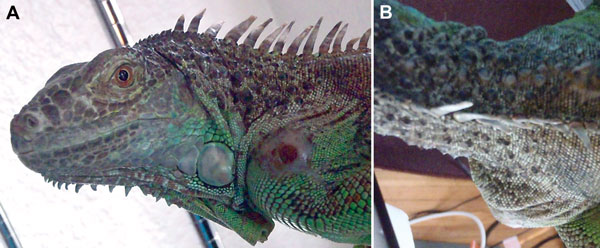Volume 20, Number 2—February 2014
Dispatch
Burkholderia pseudomallei Isolates in 2 Pet Iguanas, California, USA
Figure

Figure. . Abscess on shoulder of iguana infected with Burkholderia pseudomallei, California, USA, 2013. A) Lateral view. B) Dorsal view. Photo was taken at the time of sampling surface of animal and its environment.
1Current affiliation: Stanford University School of Medicine, Stanford, California, USA.
Page created: January 17, 2014
Page updated: January 17, 2014
Page reviewed: January 17, 2014
The conclusions, findings, and opinions expressed by authors contributing to this journal do not necessarily reflect the official position of the U.S. Department of Health and Human Services, the Public Health Service, the Centers for Disease Control and Prevention, or the authors' affiliated institutions. Use of trade names is for identification only and does not imply endorsement by any of the groups named above.